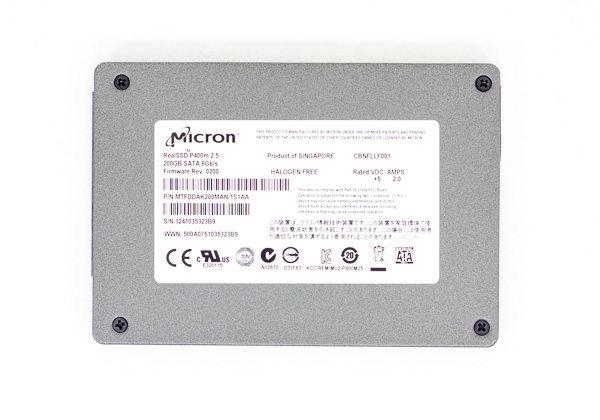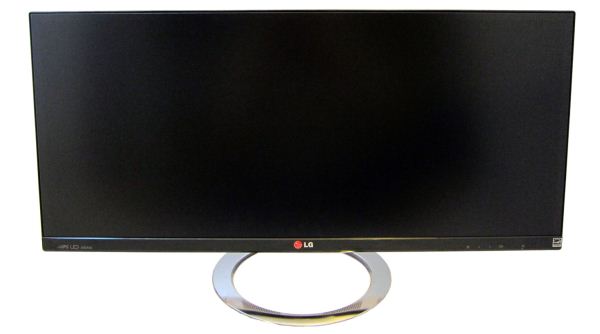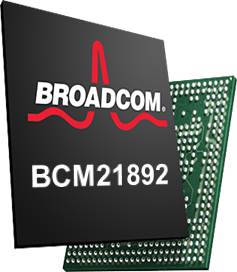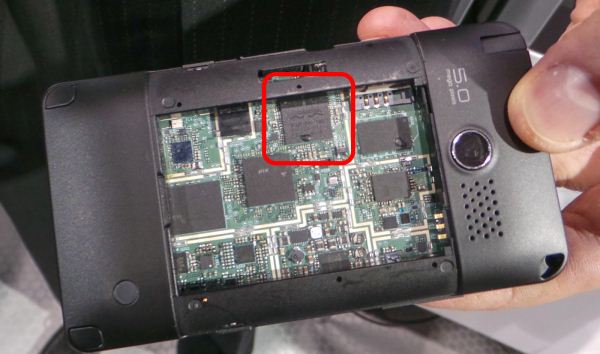AnandTech Article Channel |
- Micron P400m Review (200GB)
- LG 29EA93 Monitor Review - Rev. 1.25
- Times are Changing: Intel Building an IPTV Service + Box
- Broadcom Announces BCM21892 - Their First 4G LTE-Advanced Baseband
| Posted: 12 Feb 2013 08:00 PM PST Micron has remained one of the more stable players in the SSD space over the past few years. Although not typically at the top of our charts, Micron (and its consumer brand, Crucial) have generally paired the latest in NAND technology with custom firmware that’s well validated. It sounds like a simple combination, but it’s so rarely found in an industry that’s growing quickly enough to both those that are first to market as well as those that are most reliable. On the enterprise front, Micron is looking to fill a gap in its product lineup. In the 2.5” SATA form factor, Micron really only had two offerings: the dated SLC-based P300, and the entry level P400e. The former was built for a market that has increasingly moved to high-endurance MLC NAND, while the latter wasn’t robust enough to deal with any of the more write-heavy enterprise environments. Filling the gap is the drive we’re looking at today: Micron’s P400m. Read on for our full review! | |||||||||||||||||||||||
| LG 29EA93 Monitor Review - Rev. 1.25 Posted: 12 Feb 2013 04:49 PM PST Last year I reviewed the LG 29EA93 monitor before its scheduled US release date. As someone that thinks there is a good market for ultrawide displays, the 21:9 aspect ratio was very interesting to me, and something I wanted to take a look at personally. While the aspect ratio was nice and enveloping for gaming, there were aspects of the monitor that were disappointing, and in the end it was something I didn't really recommend. I really dislike writing negative reviews. Writing one means that I’ve spent a good deal of time with a product while not enjoying the experience. It means that a team of engineers and designers has spent a lot of time working on something that didn’t make the cut, or they made a series of compromises for some reason that led to an end user experience that was unsatisfying. I’d much rather write effusive praise of a wonderful product that people should run out and buy than write something bad. Typically when I write a negative review, I either hear a little feedback from a company, or nothing at all. Maybe they knew the product wasn’t great but released it anyway, or they didn’t care. Sometimes I hear that a company will fix something, and then I try to hold onto hardware and test that to see if they do, but I’ve never had feedback like I did from LG after I initially reviewed their 29EA93 ultra-widescreen monitor. I had multiple emails full of detailed questions about how I test, what I was after, and what should be done to improve upon the current version. After all of these conversations, they flew out an engineer with an updated version of the 29EA93 that they said would address almost all of my issues with the first version. Did LG manage to go back and correct the problems that I found, so that the monitor now performs much better? I had to go ahead and test it to find out. | |||||||||||||||||||||||
| Times are Changing: Intel Building an IPTV Service + Box Posted: 12 Feb 2013 10:30 AM PST The most interesting things at CES were the things that weren't at CES. While I'll discuss the others in due time, one notable absence from CES was the often rumored Intel set-top box. Erik Huggers, the head of Intel's new Media division, confirmed today that Intel was working on a complete IPTV solution: service, software and hardware, all to be sold direct to consumers. Erik confirmed that Intel Media was an all new group within Intel, staffed with folks from Apple, Netflix and Google among other places. Erik himself came from the BBC's Future Media & Technology group. Intel seems to know that it can't pull something like this off using internal talent alone. Bring in smart outsiders then give them the support of Intel seems to be the approach here - and it makes sense. Details are scarce, and I'd expect them to be for quite some time. Intel committed to launch the box and service this year and it'll support features like catch-up, video on demand as well as live TV - all delivered over the internet. A list of content providers as well as pricing are two notable bits of information that were missing from today's disclosure. Until we get closer to launch, I wouldn't expect to hear anything on either front. Intel did mention that this wasn't a value play, and there was a strong focus on content bundles, which means this is likely not a full á la carte solution that's going to drive cable TV providers out of business. I'll refrain from speculating publicly here, but there's a lot that makes this interesting. Some questions to ask: 1) Why is Intel getting into the TV business? Why now? 2) If not competing aggressively on pricing, then how will Intel differentiate? 3) Intel's divisions traditionally require high operating margins to survive in the long run. Unlike Intel's smartphone aspirations, its work in the TV space won't have the time to eventually build up steam. Intel also won't have the burden of playing catch up in a quickly maturing industry. The established players in the cable TV space have done a great job of stifling innovation for quite a while. It's clear that a more revolutionary approach is necessary to liberate live TV content. The question is whether or not Intel can be the first company to succeed where others have failed. Many expected Apple to be the first to tackle and succeed here. Perhaps Intel will beat them to the punch? (this helps answer question #1 above). More thoughts on this later.
| |||||||||||||||||||||||
| Broadcom Announces BCM21892 - Their First 4G LTE-Advanced Baseband Posted: 12 Feb 2013 04:00 AM PST It was teased at this year's CES demonstrating VoLTE calls, we saw it working in a reference design, and today, Broadcom is finally ready to make their first LTE-enabled baseband official, dubbed BCM21892. This is again Broadcom's eagerly anticipated launch LTE baseband, and supports a pretty impressive set of features for their first entry. BCM21892 includes support for GSM/EDGE, WCDMA up to HSPA+ 42.2 (DC-HSPA+), TD-SCDMA for China, and UE Category 4 (150 Mbps on the downlink) LTE-Advanced with both TDD and FDD duplex modes. There's no CDMA2000 1x/EVDO which is pretty much expected, but more on that in a moment. BCM21892 is a 3GPP Release 10 part, which is again the LTE-Advanced release that includes things like LTE carrier aggregation inter and intra band. Broadcom tells me they will support carrier aggregation modes for LTE, and WCDMA. MIMO support on BCM21892 is 2x2. In addition, there's support for VoLTE calling (which we saw demonstrated) and 3G fallback modes for migrating that call over to WCDMA and GSM as necessary. In addition Broadcom claims they have enough performance to run an operator's IMS stack entirely on their baseband.
BCM21892 is built on 28nm HPm process, which is the TSMC High-K Metal Gate for Mobile. Broadcom claims that their total solution area is 35 percent smaller than their main competition. I asked for a total package size, but they're not quite ready to disclose that. Another interesting tidbit is that Broadcom is including their transceiver inside the baseband package. DRAM is also inside the package, which is pretty common these days. There's still an external PMIC/PMU, which is also Broadcom's own design. Interestingly enough Broadcom claims it can do 8 bands (I'm assuming they're talking about primary receive) on its transceiver, which is one more than Qualcomm's 7 primary Rx ports on WTR1605/L. I asked about the low / mid / high / very-high configuration for Broadcom's transceiver, but they're not quite ready to disclose that information. There's no GNSS/GPS support on BCM21892 at the moment, Broadcom envisions customers using one of their discrete GNSS devices for this, since their WLAN/BT/FM/NFC combos also don't include GNSS support. It isn't too much of a stretch to picture GNSS moving onto the baseband with some future revision, however. I saw a slide at CES which noted support for envelope tracking, which BCM21892 indeed includes support for officially now. Broadcom claims that support for envelope tracking among other things will give them a 25 percent power savings over competitors without it. Without going into too much discussion, envelope tracking involves varying the drive voltage for transmit power amplifiers depending on the amplitude (envelope) of the desired signal for maximum efficiency. We will see other players also start talking about envelope tracking soon as well. I asked Broadcom about what it views is BCM21892's market differentiation, and it comes down to three things. First is again package size, which is 35-37 percent smaller as noted, second is envelope tracking which I touched on, and third is perhaps the most interesting – improved coexistence and collaboration with Broadcom's combos (BCM4330/4334/43341/etc) on the unlicensed 2.4 GHz band and nearby adjacent licensed bands. This is particularly important or interesting for Dish Networks and AT&T for example, on the WCS band at 2.3 GHz. The last real big remaining question is what Broadcom will do in the USA where having CDMA2000 1x/EVDO is a relevant discussion point for operators like Verizon Wireless or Sprint. The answer is that for at least Verizon, the goal is to get LTE (and later, LTE-A) on Band 13 (and later 4) up to parity with existing CDMA2000 coverage profiles, and then use VoLTE for voice. For data, we're already seeing the result of some of the newer RFPs (Request For Proposal) which don't even include CDMA2000 as a requirement, for example Samsung Galaxy Camera on Verizon which is solely band 13 LTE. It isn't entirely surprising to see CDMA2000 support become something of a non-issue by end of 2013, early 2014 when Verizon finishes its LTE rollout. I noted it in my writeup from the CES VoLTE demo, but there's no surprise that Broadcom chose Verizon's Band 13 for its VoLTE demo given that situation. The rest of the discussion is operator and OEM support, which Broadcom claims is enthusiastic and already heading into field trials. The market at present for smartphone connectivity with LTE has really been dominated by Qualcomm, and Broadcom entering the fray with a competitive offering should make things interesting. Timing wise, BCM21892 is sampling right now, with production in early 2014. Source: Broadcom | |||||||||||||||||||||||
| You are subscribed to email updates from AnandTech To stop receiving these emails, you may unsubscribe now. | Email delivery powered by Google |
| Google Inc., 20 West Kinzie, Chicago IL USA 60610 | |








No comments:
Post a Comment